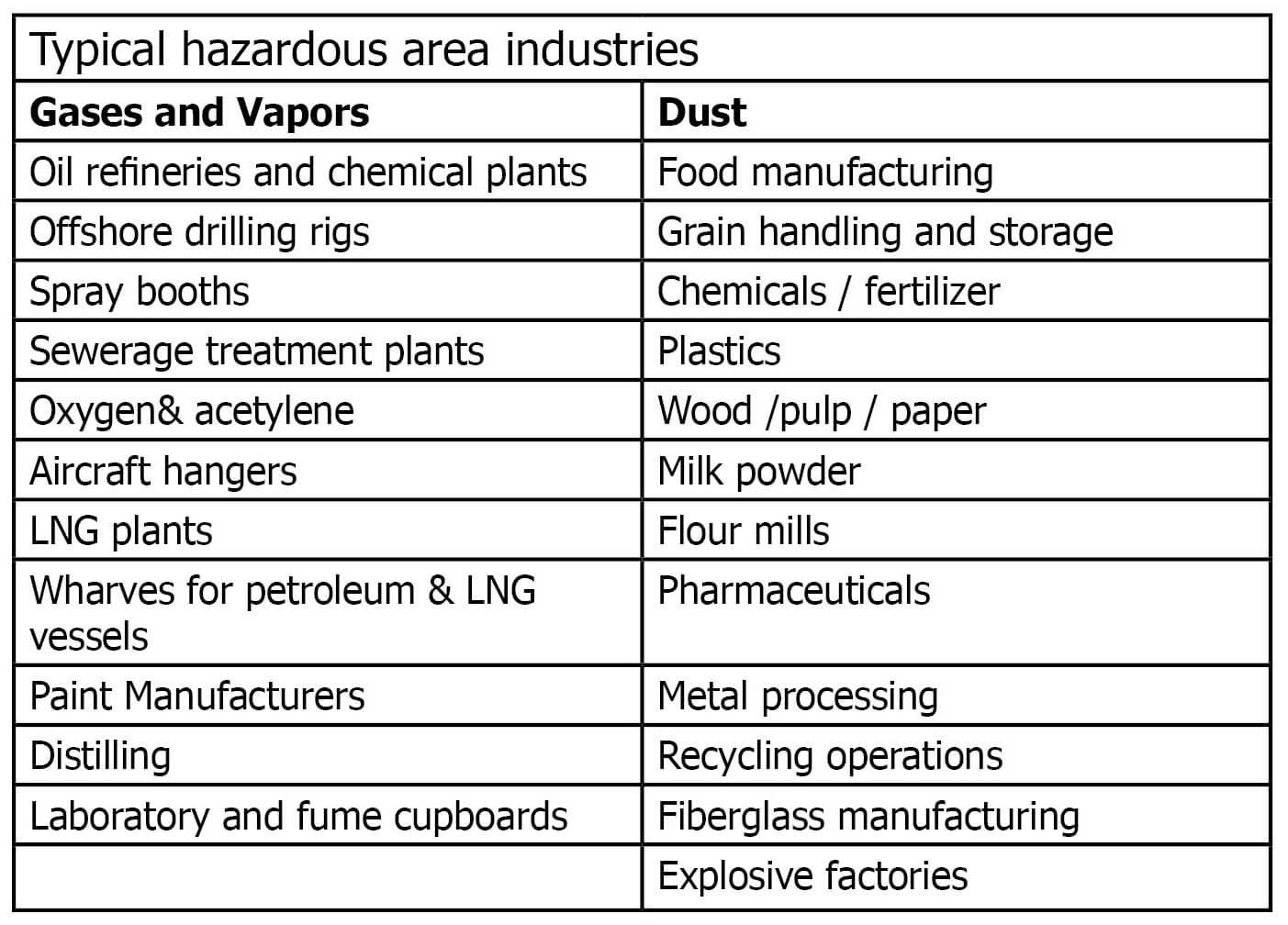The 5-Minute Rule for Roar Solutions
The 5-Minute Rule for Roar Solutions
Blog Article
Excitement About Roar Solutions
Table of ContentsGetting My Roar Solutions To WorkRoar Solutions - An OverviewRoar Solutions Fundamentals Explained
In order to shield installations from a potential explosion a method of evaluating and categorizing a possibly hazardous area is needed. The objective of this is to ensure the proper choice and installation of devices to ultimately avoid a surge and to guarantee safety of life.
(https://www.mixcloud.com/roarsolutions/)
No tools should be set up where the surface area temperature of the tools is higher than the ignition temperature of the provided risk. Below are some usual dirt hazardous and their minimum ignition temperature level. Coal Dust 380C 225C Polythene 420C (thaws) Methyl Cellulose 420C 320C Starch 460C 435C Flour 490C 340C Sugar 490C 460C Grain Dust 510C 300C Phenolic Resin 530C > 450C Aluminium 590C > 450C PVC 700C > 450C Residue 810C 570C The probability of the risk existing in a focus high sufficient to cause an ignition will certainly differ from place to place.
In order to identify this danger an installation is separated right into locations of risk relying on the quantity of time the hazardous exists. These locations are described as Areas. For gases and vapours and dirts and fibers there are three zones. Area 0 Area 20 An unsafe atmosphere is highly likely to be present and might exist for long periods of time (> 1000 hours per year) or also continually Zone 1 Zone 21 A dangerous atmosphere is feasible however not likely to be existing for lengthy periods of time (> 10 450 C [842 F] A category of T6 means the minimal ignition temperature is > 85 C [185 F] Unsafe location electric tools maybe developed for usage in greater ambient temperatures. This would certainly suggested on the score plate e.g. EExe II C T3 Ta + 60C( This suggests at 60C ambient T3 will not be gone beyond) T1 T1, T2, T3, T4, T5, T6 T2 T2, T3, T4, T5, T6 T3 T3, T4, T5, T6 T4 T4, T5, T6 T5 T5, T6 T6 T6 A T Class rating of T1 suggests the maximum surface area temperature produced by the tool at 40 C is 450 C. Presuming the associated T Course and Temperature score for the equipment are suitable for the location, you can constantly make use of a tool with a much more stringent Department score than required for the location. There isn't a clear solution to this question regrettably. It truly does depend upon the sort of devices and what repair services need to be accomplished. Tools with specific examination procedures that can't be performed in the field in order to achieve/maintain 3rd party rating. Need to return to the manufacturing facility if it is prior to the devices's solution. Area Fixing By Authorised Employee: Difficult testing may not be needed however certain treatments may need to be adhered to in order for the equipment to preserve its third event score. Authorised personnel need to be employed to carry out the work correctly Fixing need to be a like for like replacement. New element must be considered as a direct replacement calling for no special testing of the devices after the repair work is total. Each tool with a harmful rating need to be examined independently. These are laid out at a high degree below, yet for more detailed details, please refer directly to the standards.
Roar Solutions Things To Know Before You Get This
The devices register is a comprehensive data source of equipment records great post to read that includes a minimum collection of fields to recognize each product's location, technological parameters, Ex lover category, age, and environmental data. The ratio of In-depth to Close assessments will be established by the Devices Risk, which is assessed based on ignition risk (the possibility of a source of ignition versus the chance of a flammable ambience )and the harmful location category
( Zone 0, 1, or 2). Executing a robust Risk-Based Examination( RBI )method is crucial for ensuring compliance and safety in handling Electrical Equipment in Hazardous Locations( EEHA).
Excitement About Roar Solutions

In terms of explosive danger, a harmful area is a setting in which an eruptive atmosphere is existing (or might be anticipated to be present) in amounts that require unique precautions for the building, setup and use equipment. Roar Solutions. In this write-up we discover the difficulties dealt with in the workplace, the risk control actions, and the needed expertises to function securely
It issues of modern-day life that we make, keep or manage an array of gases or fluids that are regarded combustible, and a variety of dirts that are considered flammable. These substances can, in certain conditions, create eruptive environments and these can have major and awful consequences. Many of us know with the fire triangular remove any kind of one of the 3 aspects and the fire can not occur, however what does this mean in the context of hazardous locations? When damaging this down into its most basic terms it is essentially: a mix of a certain quantity of release or leakage of a particular material or material, combining with ambient oxygen, and the visibility of a source of ignition.
In most instances, we can do little regarding the degrees of oxygen airborne, yet we can have significant influence on resources of ignition, for instance electric equipment. Dangerous locations are recorded on the unsafe area classification drawing and are recognized on-site by the triangular "EX-SPOUSE" sign. Here, among various other key information, zones are split into three kinds relying on the risk, the chance and duration that an explosive atmosphere will exist; Zone 0 or 20 is deemed one of the most hazardous and Zone 2 or 22 is considered the least.
Report this page